

SUMMARY
CHEMICAL PEELS
“Purpose (Indications)“
- Facial wrinkles
- “Smoker’s lines”
- “Age spots”
- Hyperpigmentation
“What It Does“
- Refreshes skin
- Lightens skin
- Decreases wrinkling by stimulating collagen in dermal layers
“Technique“
- Peel solution applied to skin with special cotton-tipped applicators
- Special ointment is applied to peeled area of skin as “moist dressing”
“Recovery Time“
- 7 days
“Recovery Instructions“
- Apply ointment to treated areas 4-6 times a day for one week
- No makeup over areas for one week
- Sunscreens needed for 2-3 months after treatment
“How Long It Lasts“
- Effects are permanent, but skin will continue to age. may wish to repeat in 5-10 years
“Ancillary Procedures Commonly Performed In Conjunction With Skin Rejuvenation“
- Blepharoplasty
- Facelift
MORE INFORMATION
Skin rejuvenation procedures improve the overall appearance of the skin by achieving a refreshed skin appearance and restoring elasticity. While they do not have the same effect as surgery, they can often prolong the time until a facelift is needed. To clarify, surgery takes away “sags and bags,” while skin rejuvenation takes away “wrinkles.” Today there are a wide variety of techniques available that allow us to tailor a skin rejuvenation program specifically designed for you – one to match your skin type, lifestyle, and desires. In customizing a skin rejuvenation program to meet an individual’s needs, many factors must be considered. Among these are type of skin, general health, and lifestyle. Each type of skin rejuvenation technique varies with the length of recovery time necessary and the frequency with which they need to be repeated.
“Aging Process“

In order to understand how skin rejuvenation techniques work, it is essential to understand the aging process. As we age, a number of things happen. Our skin loses moisture and elasticity. Fat redistributes itself, muscles and skin become more lax, and bones actually start to resorb. Wrinkles [rhytids] are the first signs of this aging process. Skin folds or “bags” are the more advanced signs, which actually require removal of the excess skin.
“Aging Skin Changes“

During the aging process, the top layer of the skin [stratum corneum], which is a layer of dead skin cells, builds up and thickens. When this happens, our skin can develop a sallow look and small “expression lines” can develop. In addition, there is a gradual breakdown of the collagen and elastic fibers in the deeper layers of the skin. Sun exposure or “photoaging” can dramatically increase the breakdown of elastic tissues and lead to increased skin wrinkling.
SKIN REJUVENATION TECHNIQUES

Skin rejuvenation can be divided into different categories-light, medium, and deep treatments. Light treatments involved lotions and cream. These are frequently applied on a daily basis and have the advantage of no “down time” for convalescence. One can apply these lotions and continue her normal daily and social actives without any interruption. The objective of this “first level” of skin rejuvenation is to provide a more “refreshed” appearance to the skin and also, over time, remove some of the more superficial skin contour and aging changes such as minor pigmentation, scaling, and very fine wrinkling.
One is able to accelerate or “jump start” the results of their skin rejuvenation program by using serial skin rejuvenation chemical peels. This involves performing light TCA peels to the face every one to two weeks. We find that six to eight “serial peels” performed at one to two week intervals results in affects similar to those obtained by using Retin-A for a year. In our experience , approximately 50% of individuals are able to obtain affects similar to those of a light medium depth chemical peel, but without the 7-10 day “down time”. These peels help to remove some of the pigmentation changes that medically we call mild “dischromia”. It can also be very effective in cases of more severe acne. While no two individuals heal or respond the same and while individual results may very, most patients find that they can accelerate their skin rejuvenation significantly with serial TCA peels.
As part of an overall skin rejuvenation program we frequently perform a light TCA peel at three to four month intervals to essentially act as a very deep “facial” and to further accentuate the results of the application of the daily rejuvenation lotions and creams that we have prescribed.
Medium peels are use to remove mild to moderate skin textural and pigmentation changes. They may also be helpful in reducing minor acne scars and to stimulate increased collagen formation in the upper dermal layers. The advantage of medium depth chemical peels is that they have minimal chance of changing our overall skin pigmentation.

Medium depth chemical peels usually require mild sedation and are performed on outpatient basis. Patients are able to return home immediately following the procedure and experience very little if any discomfort. However one needs to refrain from wearing makeup for one week and daily apply a moist dressing (Vaseline) to the peeled areas for one week. At the end of the week the skin has rejuvenated and usually has a pleasing red glow. Most individuals are able to apply make up and resume a normal work and social schedule at that time. Medium peels are use to treat degenerative skin, mild acne, and moderate aging and environmental changes to the skin. The results last two to five years for most individuals.
Deep treatments involved the use of carbon dioxide laser’s and phenol based chemoexfoliation. These procedures provide optimal skin rejuvenation possible. They remove the top layer of the skin and stimulate increased collagen formation in the deeper layers of the skin over the following nine to 12 months. Frequently patients see not only a refreshening of the skin by regeneration of a new “top layer” of the skin, but also find approximately a 20% tightening effect to the skin over 9 to 12 months. Again, results will vary from individual to individual and no one can guaranty results. However most patients find that carbon dioxide laser or deep phenol chemical peels provide dramatic results in illuminating facial wrinkling, pigmentation changes, and improving skin elasticity. However, these treatments can be associated with some pigmentation changes. Phenol based chemical peels are used to “lighten” areas of increased pigmentation such as and patients with melasma ( the so called “mask of pregnancy”). Patients who undergo a phenol based chemical peel need to accept the fact that their skin may become lightened to the extent that they need to use make up and cover treated areas. Despite this the phenol peel is very popular because it provides most dramatic reduction in facial wrinkling and the most improvement in skin elasticity of any of the facial rejuvenation procedures.

Carbon dioxide laser surface as well as phenol chemical peels require minor sedation. Procedures are done on an outpatient basis, and patients are able to return home immediately following the procedure. Similar to the medium peel, there is very little if any discomfort associated with either of these procedures. As with the medium chemical peel, a moist dressing technique is used following treatment. Vaseline is applied to all treated areas four to six times a day for seven days. While these procedures can be repeated, we find that most individuals respond very favorably to a single carbon dioxide laser resurfacing or phenol based chemical peel treatment. These procedures are indicated for severe acne scarring, patients with recurrent skin cancers, deep facial wrinkling such as “smokers lines” and more advanced pigmentation and skin textural changes.
“Light” Rejuvenation Techniques
“Light” rejuvenation techniques are actually refreshing to the skin. They remove fine wrinkles and improve skin texture and tone. These techniques usually consist of a combination of various creams and lotions, which can be used daily. The creams and lotions remove the dead cell layer of the skin [stratum corneum] and cleanse the pores. They may also stimulate epidermal resurfacing and induce collagen formation in the very superficial layers of the dermis. The advantages are that they can be used daily and there is no convalescent period. The disadvantages are that they only refresh the skin and remove the very fine wrinkles. They will not remove the deep wrinkles.
TYPES OF “LIGHT” PEELS
“Alpha-hydroxy Acid Peels [glycolic acid]“
These are naturally occurring fruit acids that are exfoliants. They remove the top, dead-cell layer of the skin. They also allow moisturizers to better penetrate, hydrating the skin, and in this way, make wrinkles less prominent.
Glycolic acid is the most commonly used alpha-hydroxy acid peel. It is frequently a component in over-the-counter skin care preparations, but usually in low concentrations [less than 5%].
A 10% concentration of glycolic acid is commonly prescribed. It is buffered to change the pH balance so that it does not sting or irritate the skin. However, a very small percentage of people may not be able to use glycolic acid because their skin is too sensitive.
Normally, the glycolic acid lotion is applied to the face and neck in the morning. After approximately ten minutes, makeup may be applied over the area. Glycolic acid may be prescribed in combination with other ointments. Glycolic acid should not be applied to open cuts or irritated skin.
“Renova® Retin-A®“
Renova® Retin-A® are vitamin A derivatives that have been used for years to treat teenage acne. It is only FDA-approved for that use. However, over the years, many doctors have found it to be effective in removing superficial skin lesions, sun-damaged areas, and removal of fine wrinkles. Like glycolic acid, Renova® and Retin-A® remove the dead-cell layer of the skin; but in addition, they stimulate epidermal turnover, which speeds regeneration of the skin. Over time, Renova® and Retin-A® may stimulate collagen production in the upper layers of the dermis.
Retin-A® can be irritating to the skin when first used. This is a medical condition called retinoid dermatitis.” By starting out gradually and increasing concentration over time, this irritation can be greatly reduced, if not totally eliminated. The doctor will prescribe a concentration based on the individual’s skin type. Renova® has the advantage of causing less irritation. Ironically, the Renova® is actually stronger than most concentrations of Retin-A®.
A pea-sized amount of Retin-A® or Renova® is placed in each of the four facial quadrants and then worked into the skin. This is usually done at bedtime. Initially, we recommend applying every other night and then gradually increasing to a daily application. If irritation develops, the dosage would be cut back to every other day or would be diluted with moisturizer. Because these Retin-A® derivatives remove the dead-cell layers of the skin, which can act as a filter, skin may burn more easily. for this reason, you may need to use sunscreen. If one if going to be out under intense sun, temporarily stopping use of the Retin-A® or Renova® may be advisable. Retin-A® and Renova® may also cause skin to become drier; so moisturizers may need to be used as well.
“Topical Vitamin C [ascorbic acid]“
Vitamin C is especially formulated as a lotion or cream that is applied to the skin to reduce lines around the eyes, mouth and forehead. It also aids skin in appearing smoother, more radiant, and firmer. It helps protect against the harmful effects of UVA rays. Application for topical Vitamin C is new, but research in the use of Vitamin C has been ongoing and extensive.
Topical Vitamin C plays an important part in protecting your skin against ultraviolet light. When the skin is exposed to Vitamin C, up to two-thirds of the Vitamin C normally found in the skin is destroyed. Because Vitamin C is not synthesized in the body, it must be provided for by diet. The new topical Vitamin C provides more than twenty times the amount of Vitamin C found in normal skin. While Vitamin C is clearly not a sunscreen, it can help repair some of the damage caused previously by the sun as well as prevent further sun damage. In addition, it signals the body to begin synthesizing collagen. This results in a smoother, firmer finish to the skin.
Because of its potency, topical Vitamin C should be used only once a day, either in the morning or in the evening. It should be applied to clean, dry skin. After applying the Vitamin C, allow it to sit for approximately one minute before applying moisturizer or makeup.
“Serial Chemical Peels“
These peels consist of 4-6 treatments of 10% trichloroacetic acid or 70% glycolic acid applied to the skin at two-week intervals. This can generally have the same effect as one year’s use of Retin-A® or Renova® in some individuals. Serial peels are used for individuals who want to “jump start” their skin rejuvenation program or on people who are unable to use Retin-A® or Renova® either because it is too irritating or they are unable to work it into their schedule.
The process is a simple one. Patients present to the Center and remove makeup. The peel solution is applied to the skin with a cotton-tipped applicator. Some patients experience a slight tingling, but most have no discomfort. Cool-water compresses are then placed over the face to deactivate the solution. After this, the patient can then apply makeup and are able to leave and return to normal activities. No recovery time is necessary, and the patient can immediately resume their normal daily activities. Over time, this can gradually develop some improved texture and a refreshed appearance. This peel can be used in combination with glycolic acid, Retin-A® or Renova® , and topical Vitamin C.
“‘Medium’ Chemical Peels“
A medium peel is used to treat mild acne, mild skin textural changes, mild color changes [age spots], and mild wrinkling. They usually require 7-10 days to recover [before one can wear makeup]. There’s no permanent pigmentation change in the skin, as can be seen with deep chemical peels. Medium chemical peels may need to be repeated every 3-4 years. They are frequently utilized in men. TCA 35% or Jessner’s +35% TCA peel is used in the medium peel process. These are done under twilight anesthesia on an outpatient basis. Vaseline is applied to the area following the peel, and the patient is able to return home that evening. for the next seven days, they keep the peeled area moist with Vaseline and frequent showers. There is virtually no discomfort associated with the healing process. Most individuals are able to apply makeup and return to their normal activities at seven days. The skin may have a reddened appearance, like mild sunburn, which subsides over the next several days. It can easily be covered with makeup.
DEEP REJUVENATION TECHNIQUES
“Phenol-based Chemical Peels“

Phenol-based chemical peels are considered “deep” peels. They are the strongest type of peel and produce the most dramatic changes. They’re used to treat deep wrinkles or “smokers’ lines” and pigmentation changes. At that time, the skin has a reddened appearance; makeup can usually be applied. The skin may continue to be red for 6-8 weeks. During this time, the redness is usually covered easily with makeup. The skin then gradually fades back to the normal skin color or potentially a lighter color.
The phenol-based chemical peel is particularly beneficial for treating individuals who have areas of hyperpigmentation around the eyelid area. It can provide an aesthetically favorable lightening effect as well as removing fine wrinkles and providing a “tightening” of the skin. This peel is commonly performed in conjunction with blepharoplasty surgery. It is important for patients to realize that all wrinkles cannot be removed. Some individuals can obtain dramatic improvement, but results can vary from individual to individual.
Laser Treatment
Laser resurfacing is a relatively new technique, in which light energy is used to remove the most superficial layer of skin [epidermis], and actually stimulates increased collagen in the deeper layers of the skin [dermis]. The high-energy carbon dioxide and erbium lasers have been developed, which are the primary lasers used for skin resurfacing. The wound healing mechanism and recovery time is very similar whether laser resurfacing or traditional phenol-based chemical peeling is performed. In one case, light energy is used; in the other case, various chemicals are utilized to achieve rejuvenation of the skin.
Laser resurfacing is usually done on individuals who are concerned with deep wrinkling around the mouth or eyelid area as well as general photoaging and degenerative skin changes over the entire face. While not all wrinkles can be removed, significant and dramatic improvement can be obtained in selected individuals. The advantage of the laser over the phenol-based chemical peel is that there is less chance of pigmentation changes to the skin, and the degree of redness following surgery may be significantly less.
Laser resurfacing is also frequently used to treat scars. Laser resurfacing performed at 4-8 weeks after a facial laceration can stimulate wound healing and , in many cases, dramatically improve the aesthetic appearance of the area. Laser resurfacing may provide significant improvements in older, depressed scars in selected patients.
“Technique“
With the erbium laser, a topical anesthetic cream is applied to the skin two hours prior to the procedure. Laser resurfacing is then performed over selected areas. The patient applies Vaseline over the area and washes the area 4-6 times a day for the next 3-5 days. Most patients find that, by the third to fifth day, they are able to apply makeup over the reddened skin. The redness usually fades away within the next week. The advantage to this technique is that the patient recovers more quickly and can resume normal social and work activities in approximately one-third the time of traditional chemical peels or laser resurfacing techniques. The disadvantage is that 1-3 treatments are usually required spaced at 1-3 month intervals in order to obtain the maximum improvement for the deepest wrinkles. There is virtually no pain associated with this technique, and minimal if any pigmentation changes to the skin are noted, in contrast to other rejuvenation techniques. This makes this laser resurfacing procedure very desirable for men and those with busy schedules and limited recovery time.
The carbon dioxide laser scanner is used for facial rejuvenation. With this technique, a topical anesthetic cream is also applied to the skin approximately two hours before treatment. Because the treatment is more intense, local anesthetic is frequently needed to anesthetize the areas to be treated. This procedure can be done with a minimal amount of discomfort. Some individuals prefer to have “twilight” anesthesia. If the full-face area is treated, twilight anesthesia is usually utilized. Following the procedure, the patient applies Vaseline to the treated areas and washes their face 4-6 times a day. There is slightly more swelling and crusting than with the erbium laser. Most individuals find that they can begin to cover the reddened areas with makeup at seven days following treatment. Redness may persist for several weeks following surgery, but can usually be concealed with makeup. While there is no longer recovery time and slightly more erythema [redness] associated with this procedure, the carbon dioxide laser usually requires only one, possibly two, treatments to obtain the desired result, in contrast to multiple treatments with the erbium laser.
In contrast to phenol-based chemical peels, there is minimal, if any, coloration change to the skin following carbon dioxide laser treatment.
As with any skin rejuvenation technique, it is important for patients to avoid increased sun exposure for the first several months following their procedure. We recommend that individuals apply a sunscreen for the first 3-4 months following any skin rejuvenation procedure, whether it is a chemical peel or laser resurfacing technique.
“ALA Photodynamic Therapy”
ALA Photodynamic Therapy – Amino Levolinic Acid [ALA] is a topical chemical that photosensitizes your skin. The ALA is then photo activated by the Pulsed Dye Laser in a process called “Photodynamic Therapy”. ALA treatments may be added to the skin rejuvenation process to optimize the inflammatory response and accelerate the aesthetic outcome. It is an important part of the overall skin rejuvenation program. ALA Photodynamic Therapy treatments help to increase stimulation of collagen and are also used to decrease pre-cancer lesions in patients. They have also been shown to be very effective in treating severe acne in many of our younger patients and are an alternative to Accutane therapy for many. We use ALA Photodynamic treatments for the cosmetic effect of improving skin texture, tone, and fine wrinkle reduction similar to that of a Medium Depth Chemical Peel, but without the expense or one week “down time” of a Medium Depth Chemical Peel.
These treatments are performed on outpatient basis, and you are able to drive yourself to and from the procedure, since only topical anesthesia is necessary. You wash your face with a special antibiotic soap. Then the Amino Levulinic Acid [ALA] is applied to your face and any other areas that require treatment with a small applicator stick. Occasionally there may be a slight tingling sensation, but there is no discomfort associated with the application. Following this, a topical anesthetic cream is applied so that the laser activation is not uncomfortable. Lights are then dimmed in order to decrease any photo activation and the topical lotion are allowed to gently penetrate into the skin for the next 45-60 minutes (your time and may vary according to specific skin type and condition being treated). The lotions are then washed from your face, and the Pulsed Dye Laser is used to “activate” the ALA. A lotion is then applied to the treated areas. This entire process takes approximately 10 minutes. Post treatment, patients need to avoid sunlight and strong indoor lighting for the next 48 – 72 hours and keep the treated areas moist with lotions or creams as directed. Your skin may become swollen and reddened like moderately severe sunburn. There is usually minimal discomfort. However, extra strength Tylenol or prescription analgesics can be used if necessary. Recovery times can vary, but most individuals can apply makeup and resume their normal activities within 3-4 days.
Skin Rejuvenation Ebook
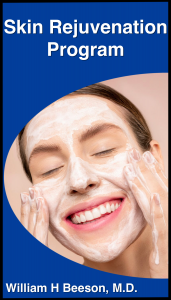
…………………………………………………………………………………………………………………………………………………………………………………………………………………………………………………………………………………………………………………………………………………………
Post Op Face Peel Instruction
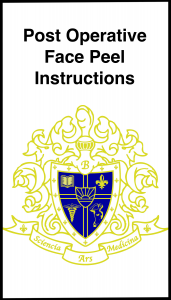
…………………………………………………………………………………………………………………………………………………………………………………………………………………………………………………………………………………………………………………………………………………………
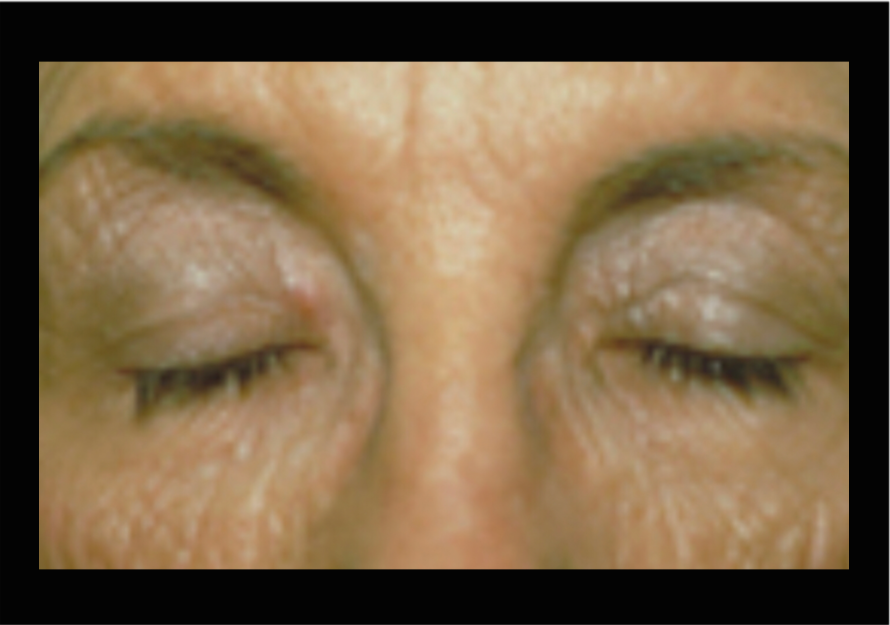
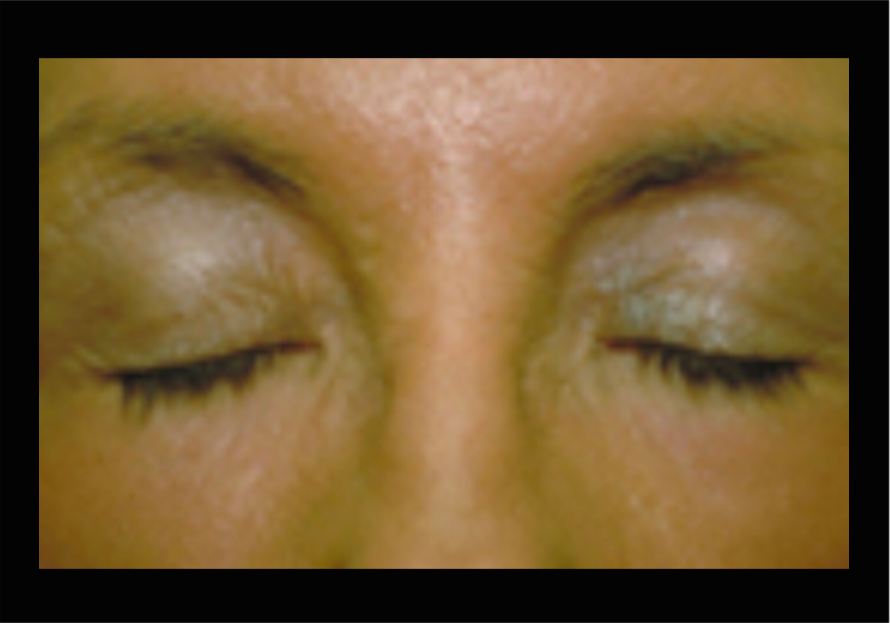
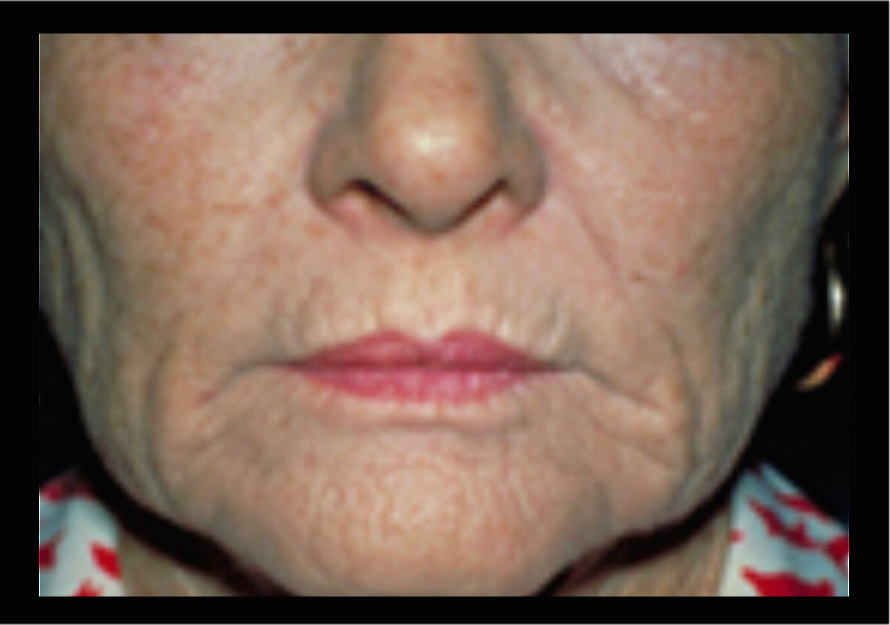
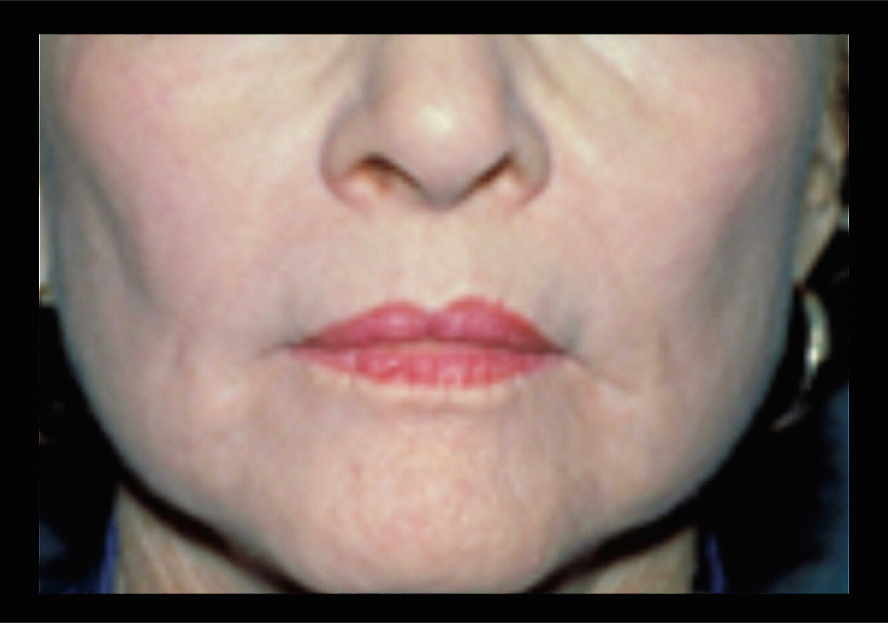
Schedule A Consultation Now!
Communication is not secure. Contacting the practice does not establish a physician/ patient relationship.*